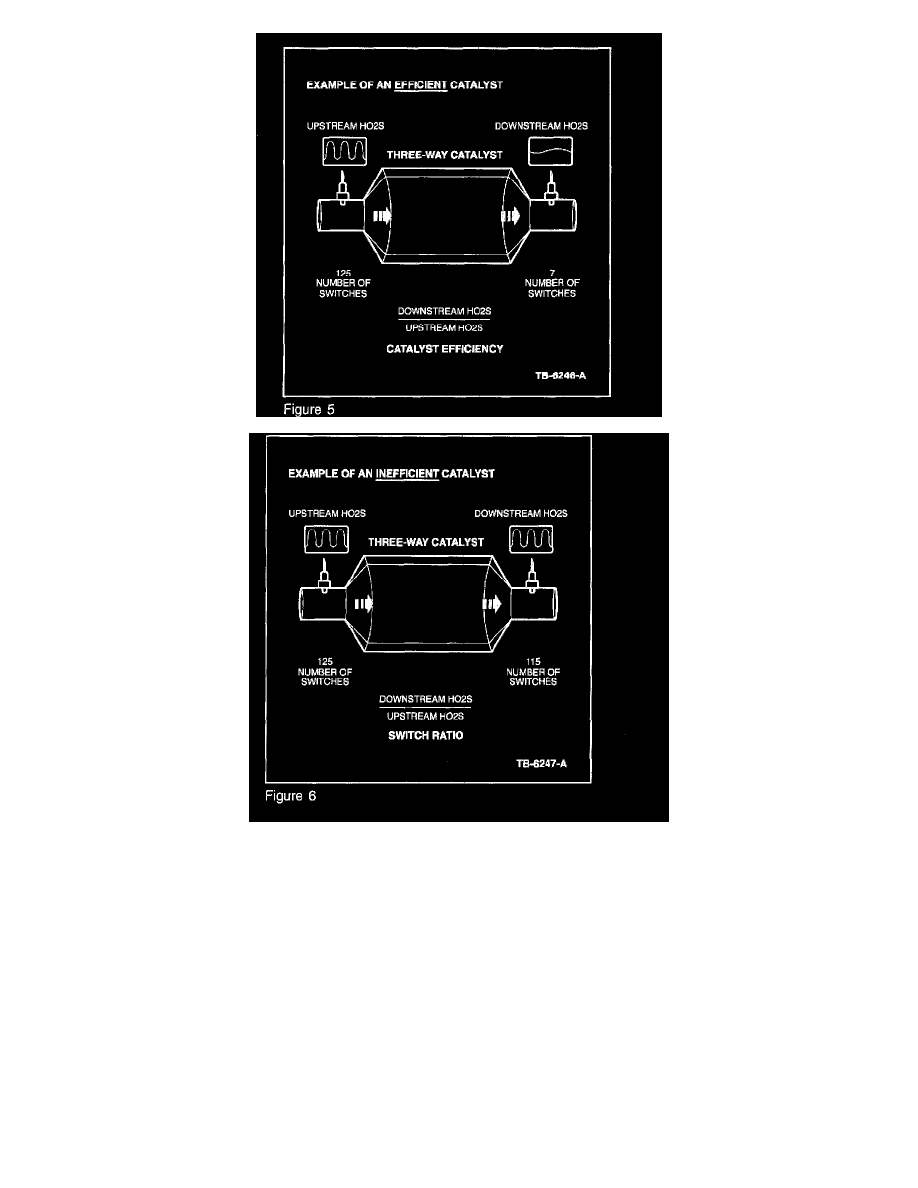Econoline E350 1 Ton V8-5.4L Prop SOHC VIN Z (1998)

The upstream H025 sensors will have a high switch frequency, due to normal closed loop fuel control. With an efficient catalyst, the downstream
H025 will have a low switch frequency. The switch ratio is determined by dividing the number of downstream switches by the number of upstream
switches over a given period of time. As the catalyst ages (or if the catalyst is damaged or contaminated), the downstream switches will increase.
When the downstream switch rate crosses a threshold value (approximately 0.75 switch ratio), a code is stored (P0420 and/or P0430) and the MIL
illuminates (refer to Figures 5 and 6).
NOTE
IF A CATALYST IS DETERMINED TO HAVE LOW EFFICIENCY AND REQUIRES REPLACEMENT, REPLACEMENT OF THE
DOWNSTREAM H025 SENSORS WILL NOT BE NECESSARY.
2.
Use care in handling H025 sensors: In the event of catalyst replacement, use care in the handling of H025 sensors to prevent damage or
contamination. Do not use power tools in the removal or installation of sensors. Use a 22mm wrench or crow foot to remove and install H025
sensors; do not use slotted sockets, as these sockets may damage wires. H025 sensors should be torqued to 41 +/- 5 N.m (30 +/- 4 lb-ft).
3.
Do not replace downstream HO2S sensors (H02S12/H02S22) for DTCs P0420 and/or P0430: When diagnosing a vehicle with a customer concern
of MIL On and DTCs P0420/P0430 in continuous memory, do not replace the downstream HO2S sensors (H02S12/H02S22). Damaged or
malfunctioning downstream HO2S sensors will not cause these DTCs to be set. Always verify the vehicle concern, then perform the pinpoint
diagnostics in the appropriate PC/ED Service Manual.
